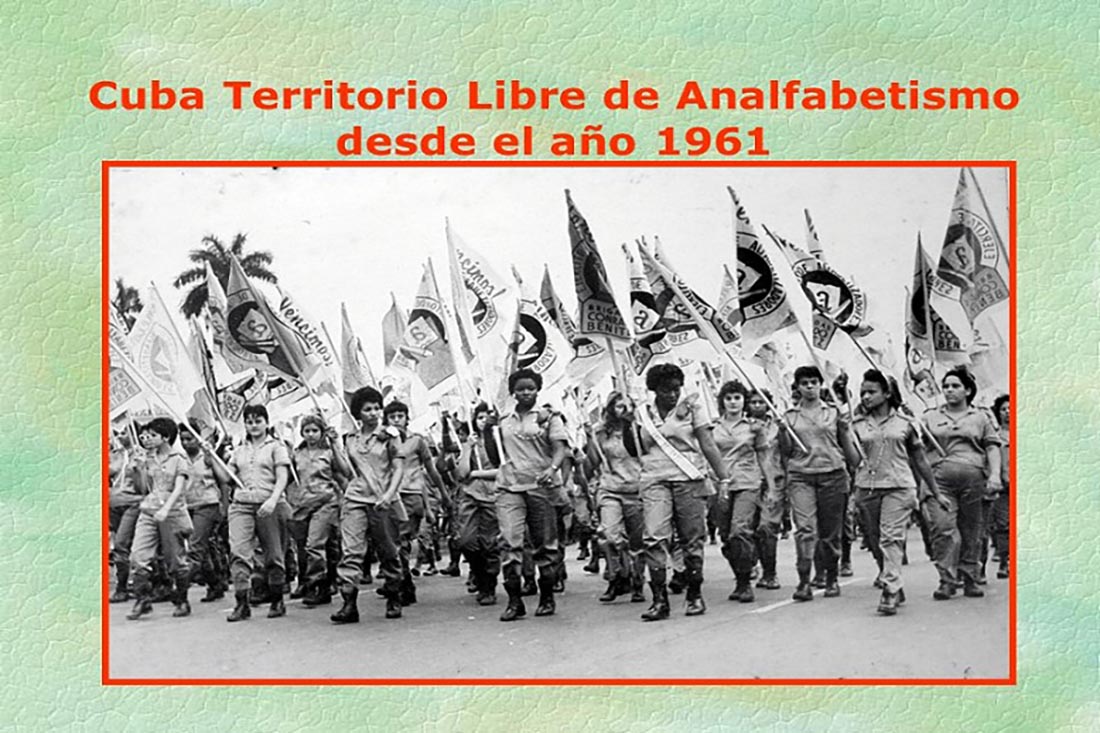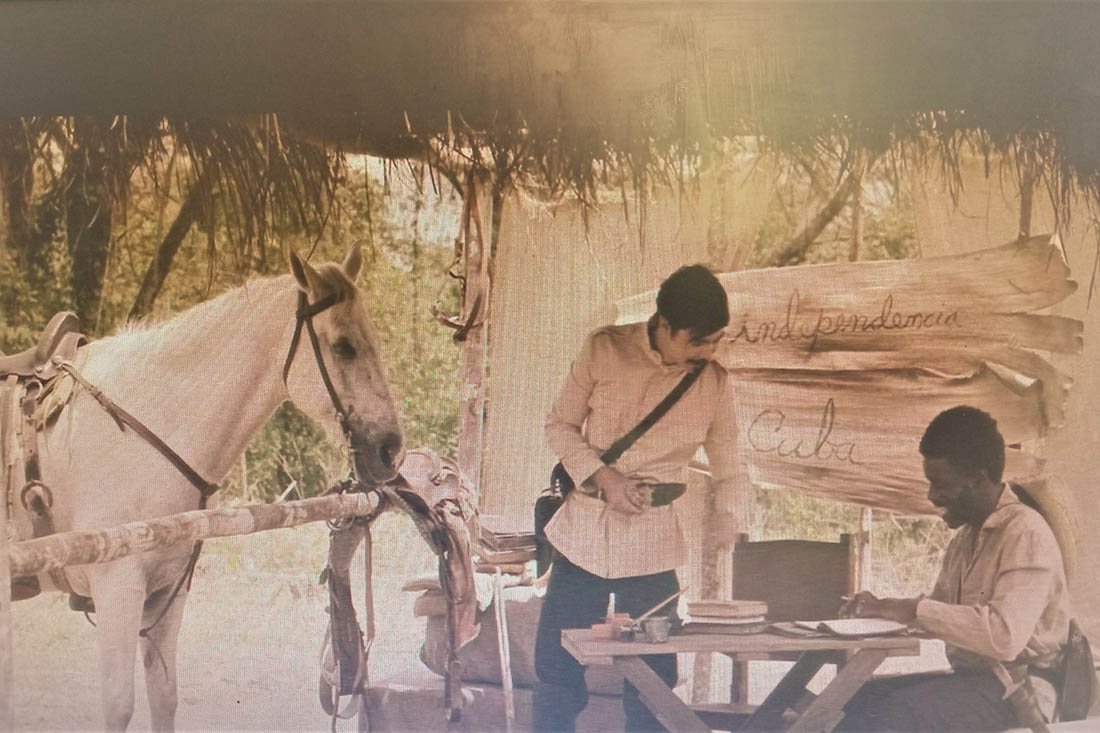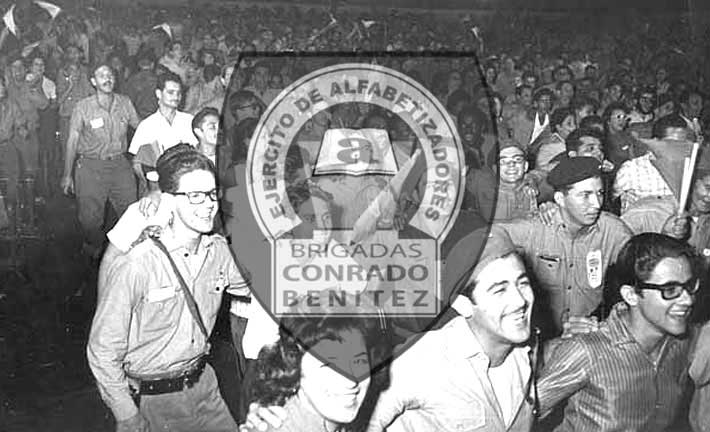The antecedents of liberating educational practices in Camagüey in the context of the nation are long-standing. Joaquín de Agüero y Agüero (1816-1851) stands out who in 1842 founded a free school in Guáimaro for poor children. For this noble gesture, the Economic Society of Friends of the Country named Agüero an honorary member.
Likewise, during the Ten Years’ War, in Guáimaro Constitution of April 10th, 1869, the need to give importance to education was ratified, which was endorsed by the Law of Public Instruction of the Republic of Cuba in Arms whose articles establish free primary education, the classes to be taught, the flexibility to establish itinerant teachers and schools in the prefectures, among others.
“… You had to see the Mayor himself acting as an understanding primary school teacher, of some of his closest subordinates, as is the case of the mulatto Ramón Agüero, whom he taught to read with the tip of the knife in the leaves of the trees …”
As a consequence, under the command of Major Ignacio Agramonte and Loynaz, civilian organizations were developed, including the well-known “Academies”, which included teaching in military camps. The act of creating a school in these difficult conditions was a test of advanced social thinking.
Likewise, as of 1878 during the Fertile Truce, the educational and recreational Associations of the different popular strata also developed self-emancipating educational practices. The intention was not simply focused on developing the intelligence of the person but transforming all aspects of his being: the intellect, the imagination, the sensitivity and the will. They were reconfigured as educational institutions of resistance, while they went against the current, demanding equality and social justice and free procedures for the most disadvantaged.
About the Constituent Assembly of 1940. Educate to free
The Cuban intellectual Juan Marinello Vidarrueta (1898-1977) unleashed an intense educational debate in favor of the unification or education universalization presented to article 65 of the Opinion of the Culture and Family Section Coordinating Commission: compulsory and free primary education . Secondary institutions with an unlimited number of enrollments, the State will cover the maintenance by means of scholarships, eliminating class and gender inequalities.
1959: The educational challenge in management
In January itself, at the call of Fidel Castro, the first literacy steps were promoted in the Sierra Maestra. On the early date of February 7th, 1959, the Fundamental Law of 1959 was formulated, Article 48 establishes that: Primary education is compulsory, vocational education is free of charge as well as second elementary education and all higher education imparted by the State, the Province or the Municipality. On December 1st of the same year, the Comprehensive Education Reform is published. Then, on March 5th, the National Commission for Literacy and Functional Education was created.
The Ministry of Education (MINED, by its acronym in Spanish), the National Institute for Agrarian Reform (INRA, by its acronym in Spanish) and the Rebel Army, systematized principles of popular education and proved that literacy from non-formal instructional platforms, without discriminating on age, sex, occupation, or other conditioning factors built the original columns for the elimination of social inequalities, in favor of justice and social inclusion.
Then, in 1960, the National Literacy Commission took over the project of the Nueva Arma magazine, an instrument of propaganda and advice, and intensified the training courses for literacy tutors.
1961, Year of Education
It is in 1961, the Year of Education, when UNESCO recognizes the Cuban effort in the battle against illiteracy. The 19-year-old young volunteer teacher Conrado Benítez García in Escambray on January 5th was assassinated. In response, on August 30th, at the IV National Literacy Meeting of MINED, 95.3 percent of the literacy rates of illiterates registered in 1953 were announced. On June 6th, the Law S/N on General and Free Nationalization of Teaching was issued.
December 22nd, 1961
On December 22nd, Armando Hart, when reading the Final Report of the Campaign in the Revolution Square, in front of the literacy tutors and workers, declared that during the years 1959 and 1960, 100,000 Cubans were literate, and in that year 1961 during the Literacy Campaign, the number of literates went up to 707,212 adults. In Cuba, the illiteracy rate was reduced to 3.9 percent of the total population, 6,933,252 inhabitants at that time.
Literacy force that carried out the Campaign:
121,000 literacy tutor volunteers
100,000 Conrado Benítez brigada members
15,000 Patria o Muerte brigade members
35,000 teaching workers
Since then, every December 22nd, the Cuban people HONOR in a special way the noble task of the Teacher.
Bibliography
Bell, José, Delia Luisa López y Tania Caram (2008) Documentos de la Revolución Cubana 1961, Ciencias Sociales, La Habana, Cuba.
De la Torre, Mildred (2015) Las paradojas culturales de la República, Cuba (1902-2000), Ciencias Sociales, La Habana, Cuba.
Díaz, María del Pilar (2004) Ideología y Revolución. Cuba, 1959-1962, Ciencias Sociales, La Habana, Cuba.
Translated by: Aileen Álvarez García










